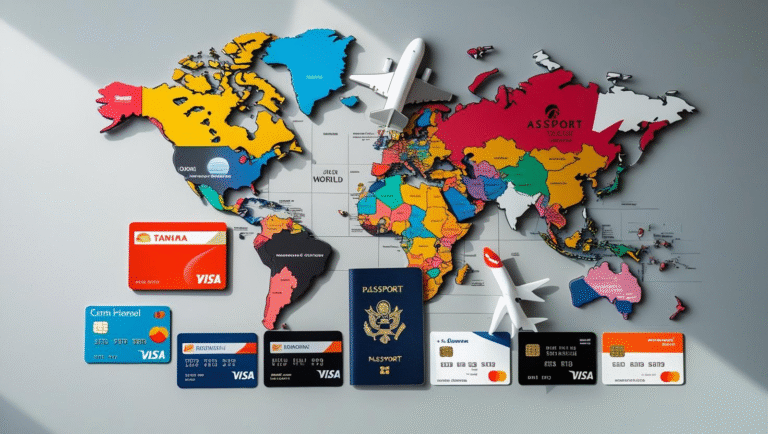How to Retire Early with FIRE Strategy: A Step-by-Step Global Guide
The dream of retiring early, free from the obligation to work for money, is more popular than ever. But what if you could achieve this not at 65, but at 45, 40, or even 35? This is the ambitious goal of the FIRE retirement strategy, a movement that is captivating ambitious professionals and savvy investors across the globe. FIRE, an acronym for Financial Independence, Retire Early, is not about a life of laziness; it’s about gaining the ultimate freedom to choose how you spend your time, energy, and skills. This comprehensive guide will demystify the core principles of the movement and provide a actionable, step-by-step blueprint for achieving financial independence, whether you’re based in the U.S., Canada, the U.K., Australia, the UAE, or anywhere else. We will break down the math, the mindset, and the practical investment tactics you need to turn the dream of early retirement into your reality.
What is the FIRE Movement? Understanding the Core Philosophy
The FIRE movement is a lifestyle and financial strategy with one primary objective: accumulate assets and investments that generate enough passive income to cover your living expenses for the rest of your life. The “Retire Early” component doesn’t necessarily mean you stop working altogether. Instead, it means you achieve the freedom to pursue work you are passionate about without worrying about the paycheck.
The entire philosophy rests on two pillars: extreme savings and intelligent investing. Followers of the FIRE retirement strategy aim to save a significantly larger portion of their income—often 50%, 60%, or even 70%—than the traditional recommendation of 15%. This accelerated savings rate is then channeled into investments designed to grow and produce income, ultimately reaching a critical mass known as your “FIRE number.”
The Different Flavors of FIRE
While the core goal is the same, practitioners often adopt different approaches based on their target lifestyle:
-
LeanFIRE: Focuses on extreme frugality both during the accumulation phase and in retirement. This involves a minimalist lifestyle to keep annual expenses very low.
-
FatFIRE: For those who aim to maintain a more standard or even luxurious lifestyle in retirement. This requires a much larger target portfolio but involves less drastic spending cuts.
-
BaristaFIRE: A hybrid approach where you achieve partial financial independence. You cover a portion of your expenses with investments but still work part-time, often for benefits like health insurance or simply to stay engaged.
The Math Behind FIRE: Your “Number” and the 4% Rule
The entire financial independence retire early plan is built on a mathematical foundation. Understanding this is non-negotiable.
Calculating Your FIRE Number
Your “FIRE number” is the total portfolio value you need to achieve to be considered financially independent. The most common formula used in the community is based on the 4% rule, a guideline stemming from the Trinity Study.
-
The 4% Rule: This rule suggests that you can safely withdraw 4% of your initial investment portfolio annually, adjusted for inflation each year thereafter, with a high probability your money will last 30+ years.
-
The Calculation: To find your target number, you simply take your annual expenses and multiply them by 25.
-
Formula: Annual Expenses x 25 = FIRE Number
-
Example: If your annual living expenses are $40,000, your FIRE number is $1,000,000 ($40,000 x 25).
-
This works because 4% of $1,000,000 is $40,000. If your portfolio averages a 7% annual return, it should continue to grow even after your withdrawals, sustaining you for decades.
The Critical Role of Your Savings Rate
Your savings rate—the percentage of your take-home pay you save—is the most important variable in determining how quickly you can reach your FIRE number. It’s not just about how much you earn, but how much you keep.
A classic concept from the blog “Mr. Money Mustache” illustrates this powerfully. A 50% savings rate, assuming a 5% real return, can lead to financial independence in roughly 17 years. A 70% savings rate can cut that time down to under 10 years. This is because every dollar you save is a dollar that is working for your future freedom.
A Step-by-Step Plan to Achieve FIRE
The path to FIRE is a marathon, not a sprint. It requires discipline and a systematic approach. Here is your actionable blueprint.
Step 1: Track and Optimize Your Spending
You cannot manage what you don’t measure. For one to three months, track every single expense. Categorize them (housing, food, transportation, etc.). This clarity is the first step toward achieving financial independence. Scrutinize each category for optimization: Can you refinance your mortgage? Reduce eating out? Choose a more affordable cell plan? The goal is to ruthlessly cut spending that doesn’t bring you joy and value.
Step 2: Maximize Your Income
While cutting expenses has a limit, increasing your income does not. Accelerate your journey by earning more. This could mean:
-
Pursuing promotions and raises in your current career.
-
Switching companies for a higher salary.
-
Developing a side hustle or freelance work.
-
Building a small online business.
Every extra dollar earned and saved shaves time off your target date.
Step 3: Invest the Difference Aggressively
Saving money alone is not enough. Inflation will erode its value. You must invest your savings to generate growth and passive income. The preferred vehicle for most in the FIRE community is low-cost, broad-market index funds and ETFs. These funds provide instant diversification and have historically provided the ~7% average annual returns the strategy banks on. As noted by Investopedia, index funds are a core component of many successful long-term investment strategies due to their low fees and market-matching performance.
Step 4: Minimize Taxes
Tax efficiency can save you years on your journey. Maximize contributions to tax-advantaged accounts available in your country:
-
U.S.: 401(k), IRA (Traditional and Roth), HSA.
-
Canada: RRSP, TFSA.
-
U.K.: ISA, SIPP.
-
Australia: Superannuation.
Understanding the tax implications of your investments and withdrawals is crucial for a sustainable FIRE retirement strategy.
Global Considerations and Potential Pitfalls
A one-size-fits-all approach doesn’t work globally. You must adapt the core principles to your local context.
Navigating Healthcare
This is the biggest wildcard for early retirees, especially in countries without universal healthcare. In the U.S., planning for health insurance premiums until Medicare eligibility at 65 is a massive part of the expense calculation. In other countries, this may be less of a concern, but understanding your national system is critical.
Managing Sequence of Return Risk
This is the risk that a major market downturn occurs just as you begin your retirement withdrawals. It can permanently damage your portfolio’s longevity. Mitigation strategies include:
-
Keeping 1-2 years of living expenses in cash or bonds.
-
Maintaining some flexibility in your withdrawal rate during bad market years.
-
Having a “Plan B” for part-time work (BaristaFIRE).
The Psychological Aspect
Leaving the traditional workforce decades early is a massive life shift. Many struggle with a loss of identity or purpose. The most successful FIRE adherents retire to something—a passion, a project, or a cause—not just from a job.
Frequently Asked Questions (FAQ)
1. Is the FIRE retirement strategy only for high-income earners?
Not exclusively. While a high income accelerates the process, a very high savings rate is the true key. Someone earning $50,000 who saves $35,000 (70%) will reach FIRE faster than someone earning $150,000 who saves $45,000 (30%). Mindset and frugality are often more important than income.
2. Is the 4% rule safe for a 50-year retirement?
The 4% rule was designed for a 30-year retirement. For a longer timeline of 50+ years, some proponents advocate for a more conservative withdrawal rate of 3-3.5% to ensure their portfolio never runs out. This, of course, requires a larger FIRE number.
3. What do I actually do when I retire early?
This is a vital question. FIRE is about freedom. This could mean traveling, spending more time with family, volunteering, learning new skills, starting a passion business, or working on projects you care about without financial pressure.
4. How does FIRE work in countries with high inflation?
High inflation is a challenge as it erodes your purchasing power and may require a higher withdrawal amount. Your investment returns must outpace inflation. This makes investing in growth assets like stocks, which have historically beaten inflation over the long term, even more critical than in low-inflation environments.
5. Can I pursue FIRE if I have a family and kids?
Yes, but it requires careful planning. Expenses will be higher, so your FIRE number will be larger. You’ll need to budget for childcare, education, and family activities. The principles remain the same, but the scale changes.
Conclusion: Ignite Your Path to Freedom
The FIRE retirement strategy is a powerful, proven framework for achieving financial sovereignty and designing a life on your own terms. It is a journey that demands extreme discipline, financial literacy, and a long-term perspective. However, the reward—decades of freedom and choice—is unparalleled.
Your journey starts today with a single step: tracking your spending. From there, you can optimize, earn, and invest with purpose. Remember, FIRE is not a radical act of deprivation; it is a radical act of prioritization. You are prioritizing your future freedom over present-day impulse spending. You are choosing to build a life where work is optional, and your time is truly your own. The math is sound. The path is clear. It’s time to start your engine and ignite your journey to financial independence.





